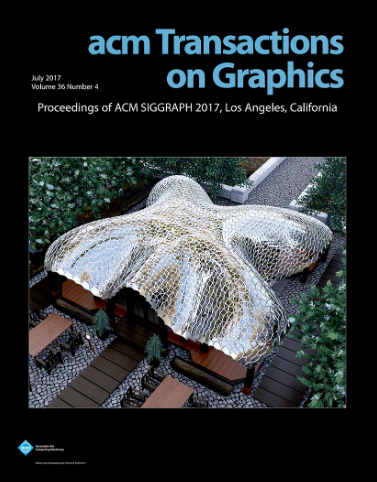CK-MPM:一种紧凑核物质点法
IF 9.5
1区 计算机科学
Q1 COMPUTER SCIENCE, SOFTWARE ENGINEERING
引用次数: 0
摘要
物质点法(MPM)已成为基于物理的模拟的基石,广泛应用于地质力学和计算机图形学中,用于模拟颗粒流动、粘弹性、断裂力学等现象。尽管具有多功能性,但原始的MPM由于粒子网格转移核的不连续而遭受细胞交叉不稳定性。现有的解决方案大多通过采用更平滑的形状函数来缓解这些问题,但代价是由于更大的内核支持而增加了数值扩散和计算开销。在本文中,我们为MPM提出了一种新的c2 -连续紧凑核,它在稳定性、精度和计算效率方面取得了独特的平衡。我们的方法与仿射粒子单元(APIC)和移动最小二乘(MLS) MPM无缝集成,而与线性核相比,每个粒子相关的网格节点数量仅增加了一倍。其核心是一个创新的双网格框架,它将粒子与网格节点单独关联在它们占据的两个交错网格上的细胞内,确保一致和稳定的力计算。我们证明,我们的方法可以使用特定于领域的语言太极或基于开源GPU MPM框架方便地实现,与二次b样条MPM相比,实现更快的运行时间和更少的数值扩散。通过单元测试、比较研究和压力测试的全面验证证明了我们的方法在保持线性和角动量、处理刚性材料和有效缩放大规模模拟方面的有效性。我们的研究结果突出了紧凑、高阶内核在推进MPM稳定、准确和高性能模拟能力方面的变革潜力。本文章由计算机程序翻译,如有差异,请以英文原文为准。
CK-MPM: A Compact-Kernel Material Point Method
The Material Point Method (MPM) has become a cornerstone of physics-based simulation, widely used in geomechanics and computer graphics for modeling phenomena such as granular flows, viscoelasticity, fracture mechanics, etc. Despite its versatility, the original MPM suffers from cell-crossing instabilities caused by discontinuities in particle-grid transfer kernels. Existing solutions mostly mitigate these issues by adopting smoother shape functions, but at the cost of increased numerical diffusion and computational overhead due to larger kernel support. In this paper, we propose a novel C 2 -continuous compact kernel for MPM that achieves a unique balance in terms of stability, accuracy, and computational efficiency. Our method integrates seamlessly with Affine Particle-In-Cell (APIC) and Moving Least Squares (MLS) MPM, while only doubling the number of grid nodes associated with each particle compared to linear kernels. At its core is an innovative dual-grid framework, which associates particles with grid nodes exclusively within the cells they occupy on two staggered grids, ensuring consistent and stable force computations. We demonstrate that our method can be conveniently implemented using a domain-specific language, Taichi, or based on open-source GPU MPM frameworks, achieving faster runtime and less numerical diffusion compared to quadratic B-spline MPM. Comprehensive validation through unit tests, comparative studies, and stress tests demonstrates the efficacy of our approach in conserving both linear and angular momentum, handling stiff materials, and scaling efficiently for large-scale simulations. Our results highlight the transformative potential of compact, high-order kernels in advancing MPM's capabilities for stable, accurate, and high-performance simulations.
求助全文
通过发布文献求助,成功后即可免费获取论文全文。
去求助
来源期刊

ACM Transactions on Graphics
工程技术-计算机:软件工程
CiteScore
14.30
自引率
25.80%
发文量
193
审稿时长
12 months
期刊介绍:
ACM Transactions on Graphics (TOG) is a peer-reviewed scientific journal that aims to disseminate the latest findings of note in the field of computer graphics. It has been published since 1982 by the Association for Computing Machinery. Starting in 2003, all papers accepted for presentation at the annual SIGGRAPH conference are printed in a special summer issue of the journal.
 求助内容:
求助内容: 应助结果提醒方式:
应助结果提醒方式:


